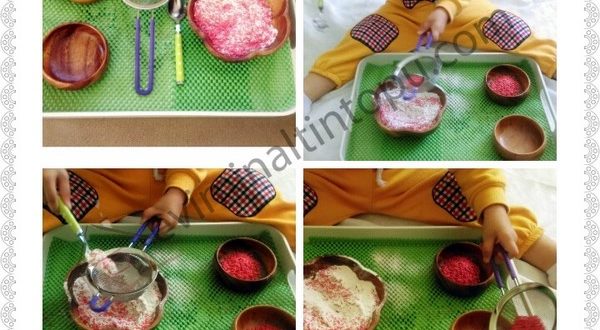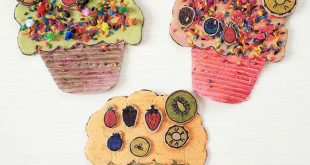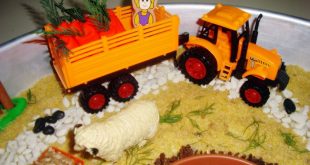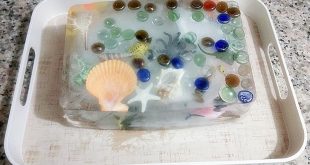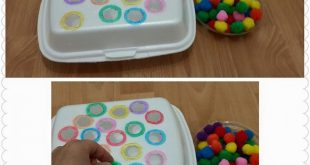Montessori Activities at Home
1- Sensory of Day & Night
This page includes our montessori sensory we have prepared for notions of day and night. You can make activities more fun with such objects and situations which express day and night.
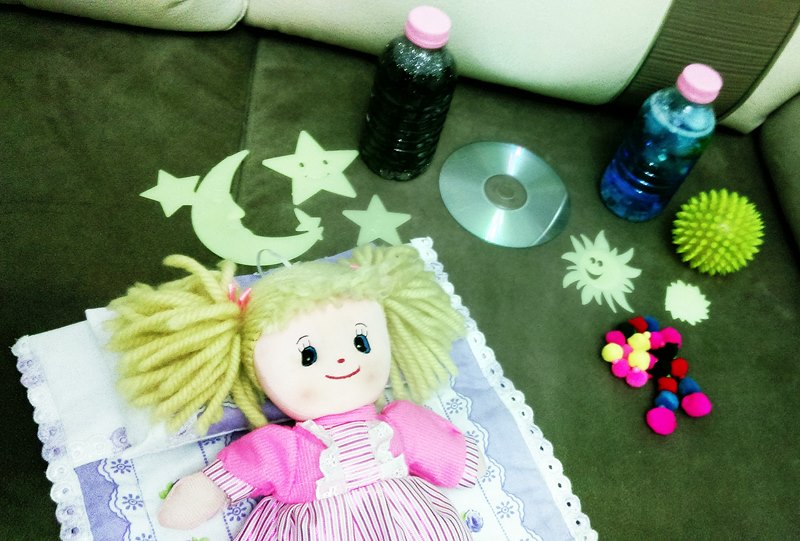
- Our baby and her bed
- Moon
- Star
- Night sensory bottle
- Day sensory bottle
- Rainbow
- Sun
- CD of slides of our photos during day and night
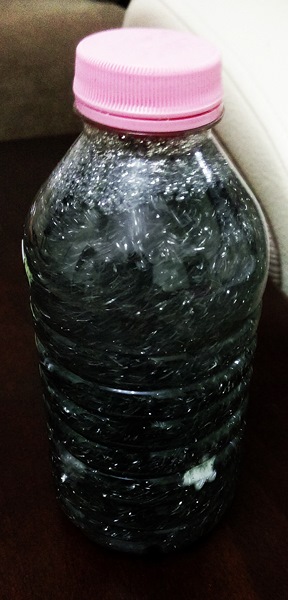
For our night sensory bottle, we add some black paint into bottle filled with water. Then we put some tiny stars and silver glitters in it.
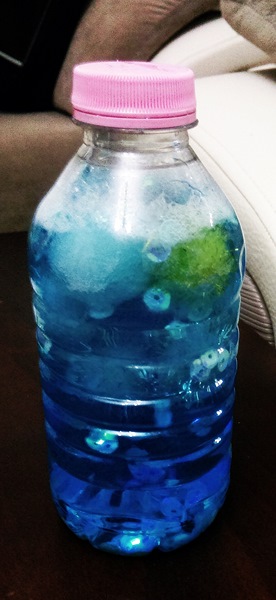
For our day sensory bottle , we add a little blue food colouring into bottle filled with water. Then we put some white pompoms, a glittering yellow pompom and some blue sequins.

It can also be prepared a different and lovely sensory activity for children by pasting shiny moon, sun and stars on ceiling.
2- Transfering from One Cup to Another by Spoon
After transfering activities with hands, it comes transfering with spoon. With this everyday skill, preparations for writing are made by transfering from left to right and activating hand muscles. Beans, hazelnuts, lentils, rice and semolina are transferred in order (from easier to harder). After each successful transfering, move on to the next and once semolina which is the tiniest is done, move on to transfering with tongs. The materials used for transfering should be made out of natural materials such as glass or wood, and special materials should be arranged for the studies, rather than the ones we use in the kitchen.
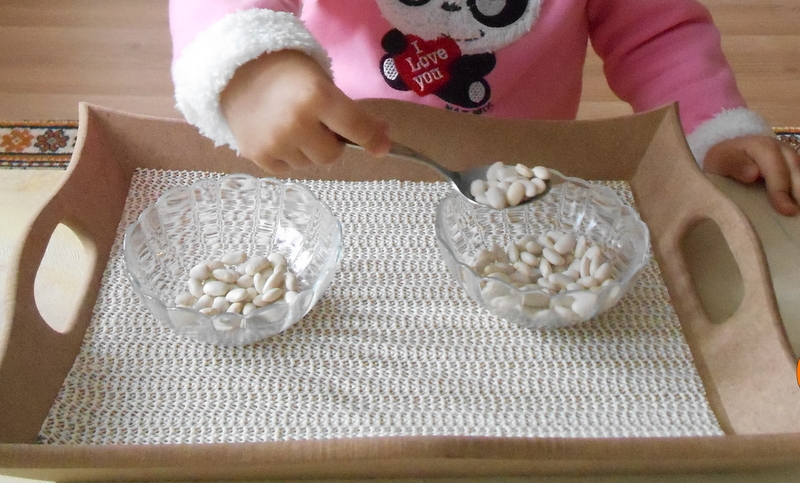
3- Balloon Inflator Mixture
Experiments improves the sense of curiosity and searching in our children. They also enable them to understand the cause and effect relationship and to produce ideas by predicting. For this experiment, 3cm vinegar is put into the bottle. Then 1 dessert spoon of baking soda is added and a balloon is stretched on to the bottle immediately. Balloon swells up as a result of the reaction between vinegar and baking soda. Children cannot hide their astonishments while observing this.
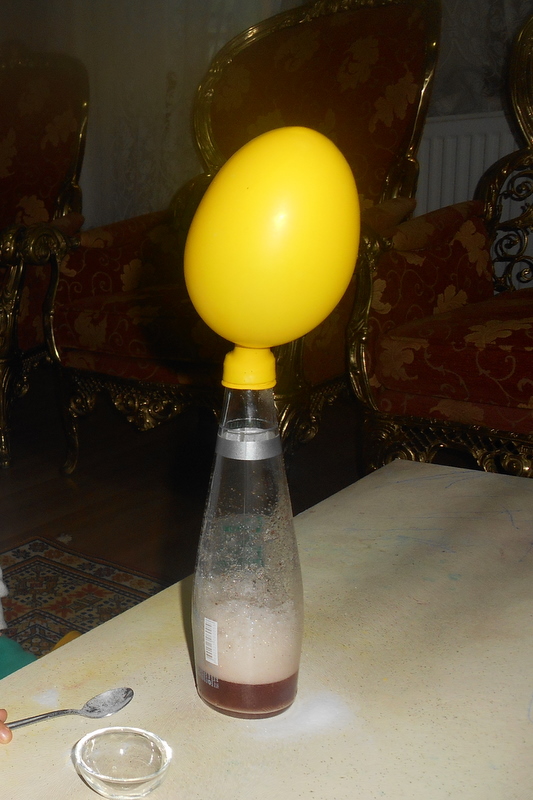
4- Grouping Peas from Beans
While grouping mixed peas and beans, we not only practise a sensory activity by grouping objects, but we also carry out fine motor activity by activating our fingers. It is also a preparation for writing and using scissors. Cups we use should be natural (glass, wood, marble) and should be specific to this activity.
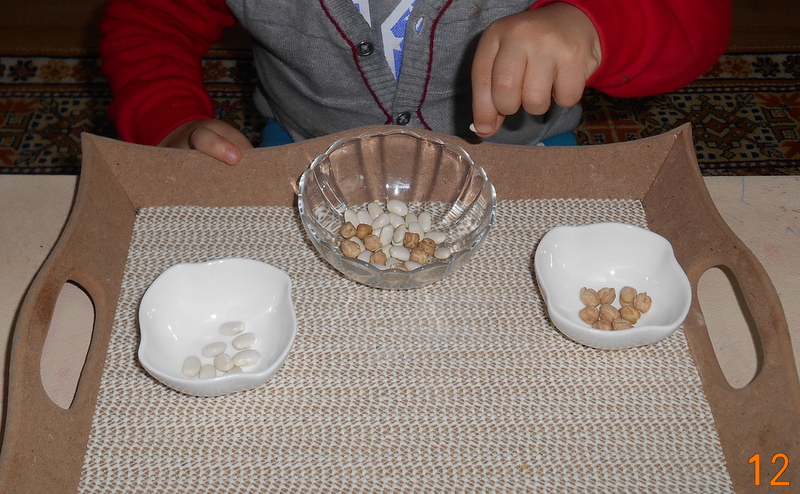
5-Cutting Playdough with Scissors
Cutting playdough with scissors is an ideal activity for writing preparation and fine motor development. We roll the playdough thinly, give it to our child and and ask them to cut it with a plastic scissors. After continueing these activities and enhancing hand muscles well for a while, they can begin to cut paper with a normal scissors.
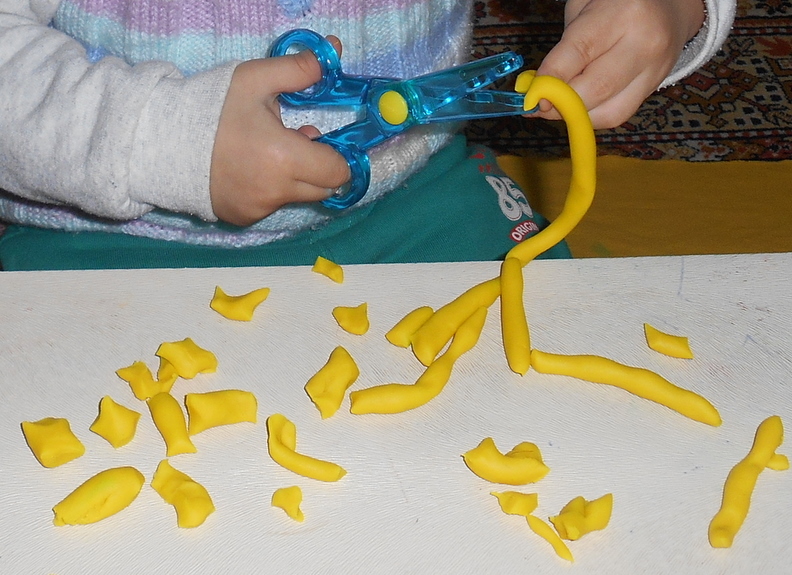
6-Feeding the Lamb
In this section, I prepared a lamb feeding activity for my daughter, for her to both improve fine motor skills and to get a sense of sensitivity towards animals. Materials are quiet simple. A shoebox, scissors, glue, green cardboard and a picture of lamb is enough for us.
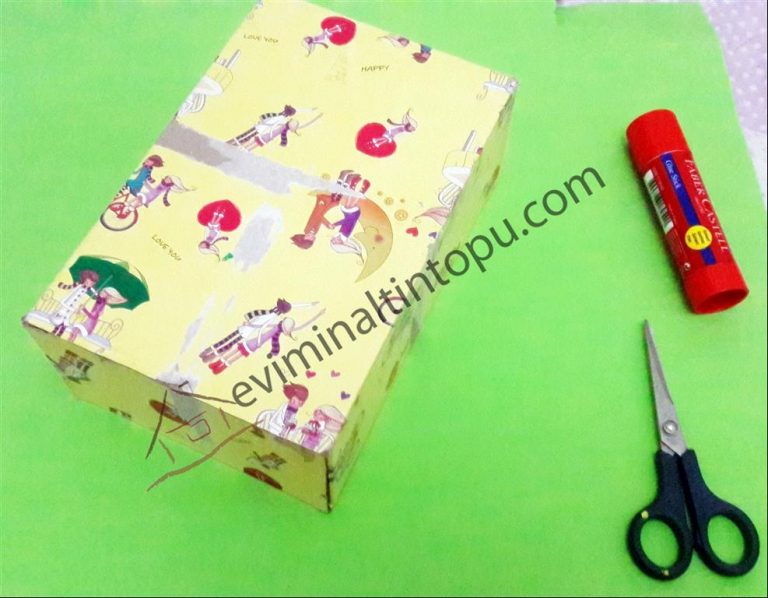
Cover the box with green cardboard properly.Then cut out the mouth of the lamb, and the part on the box that matches with the mouth as well. Fill in a bowl with some lentil and put a spoon next to it. Now our activity is ready. My daughter fed the lamb by spooning up lentils and dropping them into the mouth of the box. For our children who love animals, you can provide with this kind of activities. Please take a look to the pictures.
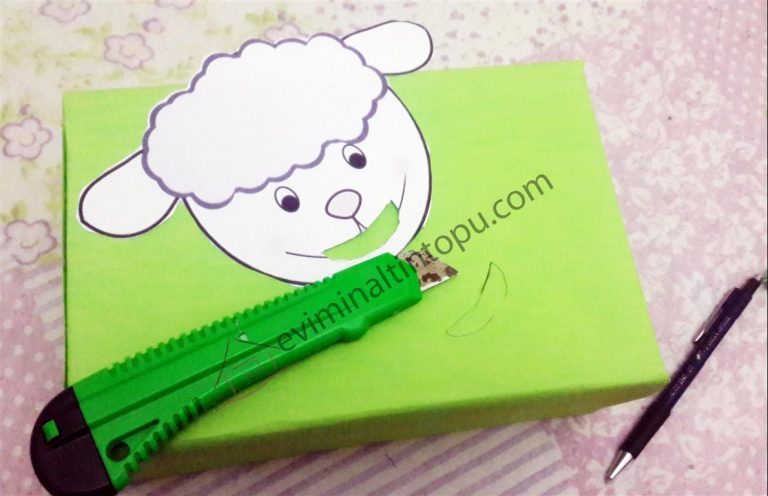
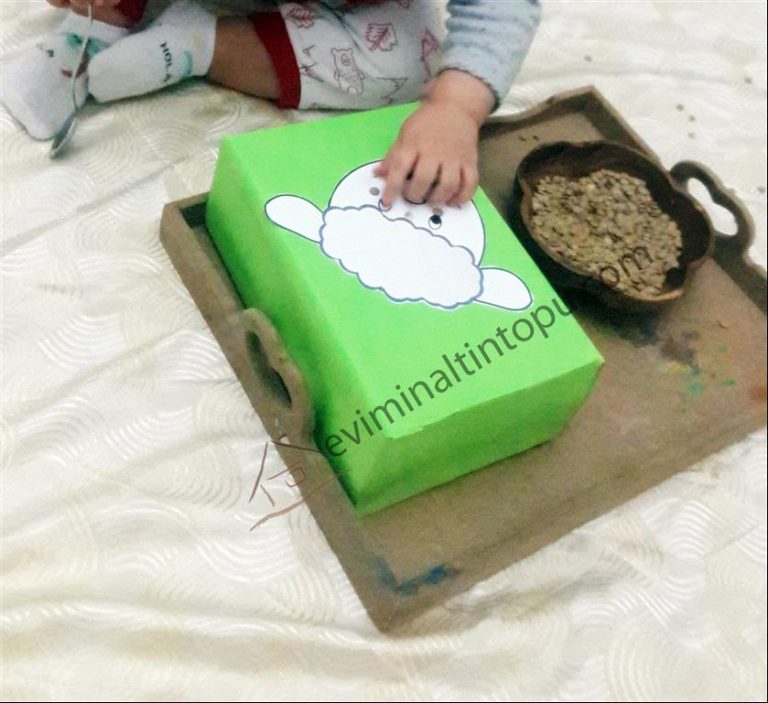
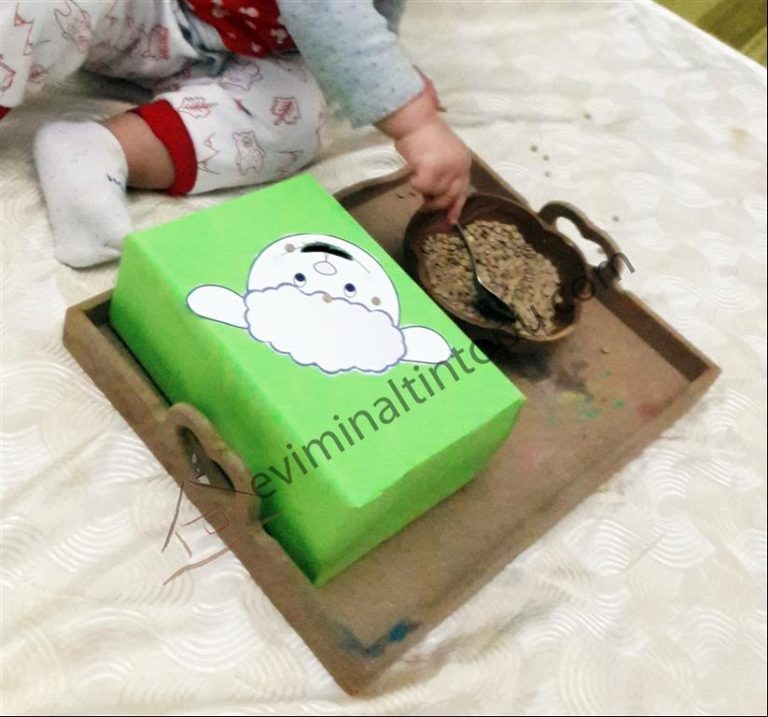
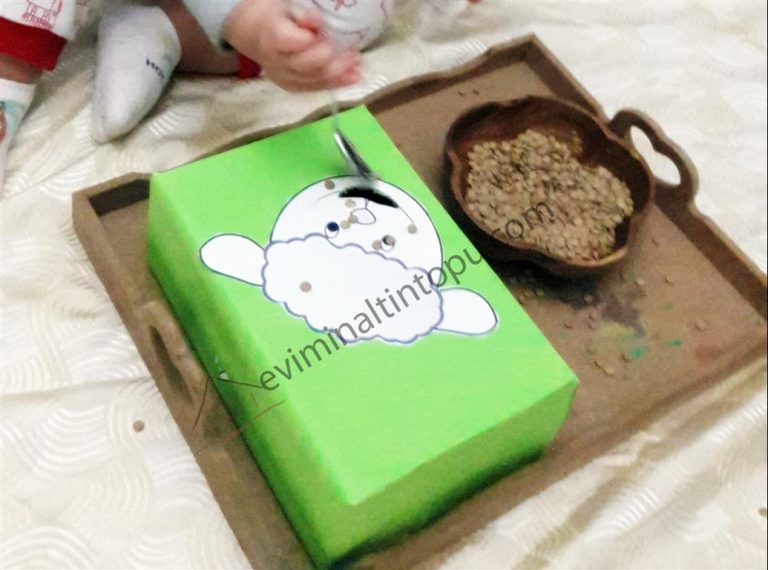
7- Material for Fine Motor Skill
Upon seeing that my daughter did not like to touch slimy things, I have made her this material for development of eye-hand coordination and fine motor skills. I added it on educational materials section because it really helped us in terms of focus duration and fine motor skills.
As in the pictures, we started with the large objects and gradually made them smaller, to make it progress from easy to hard.

And it’s very simple to make. Cut the styrofoam you see in the pictures (you can find it in places selling hairclips) in half and glue it on a piece of wood.

Activity of sticking and unsticking a toothpick.
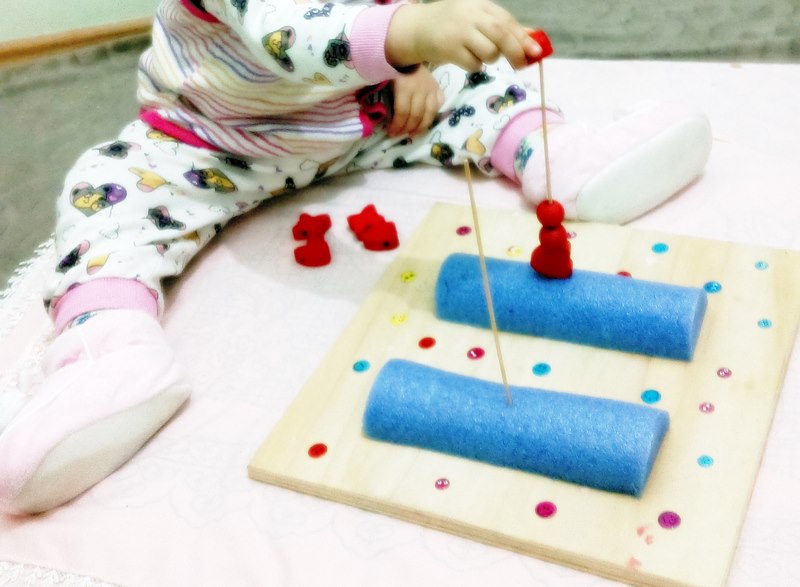
Our colored beads related to the color themes.
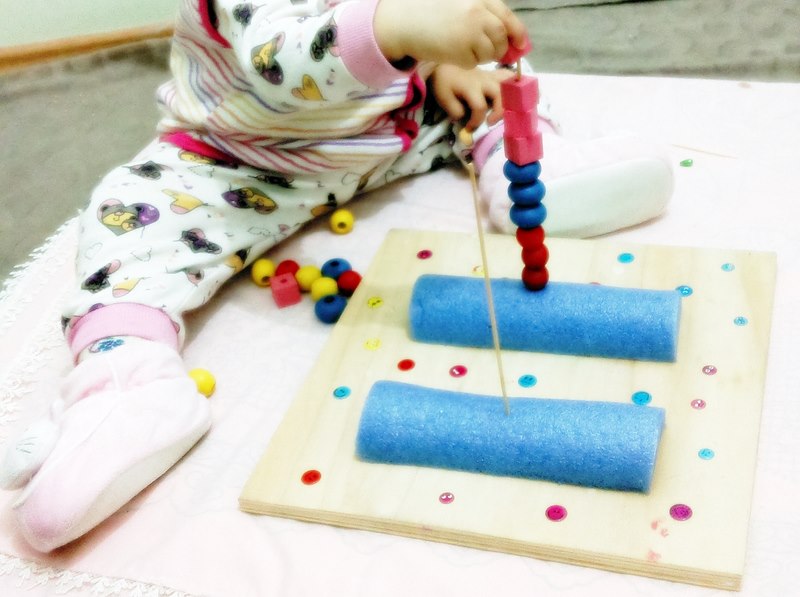
Color grouping.
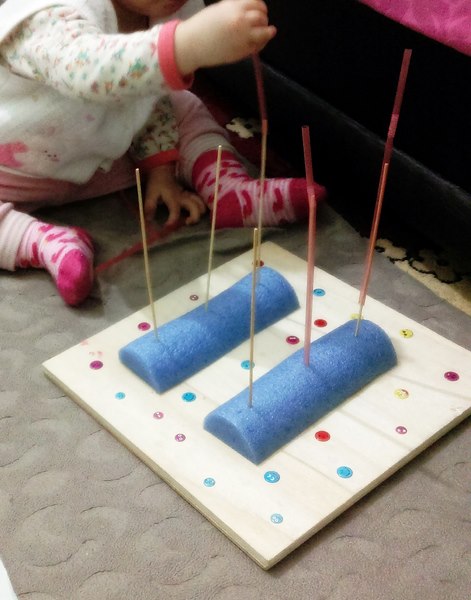
Passing the pipettes through sticks.
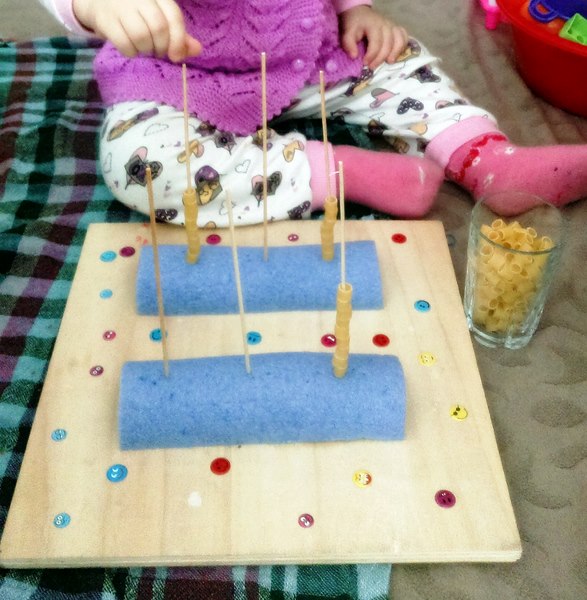
Looping the macaroni.
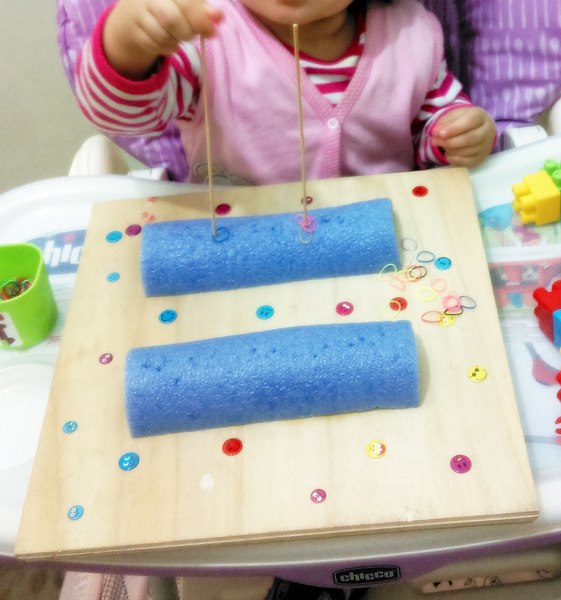
Looping elastic hairband.
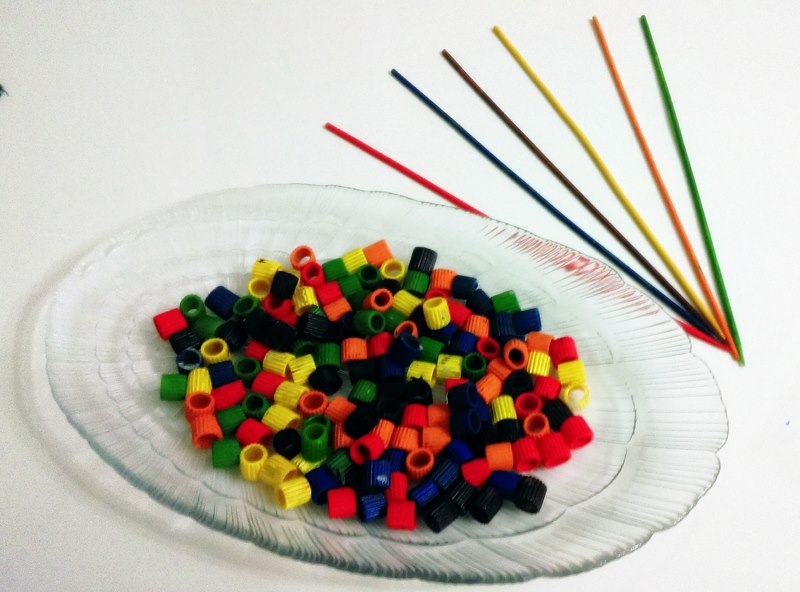
We painted macaroni and sticks with gouache paint. We use primary and secondary colors since we are learning them. You can vary the colors.
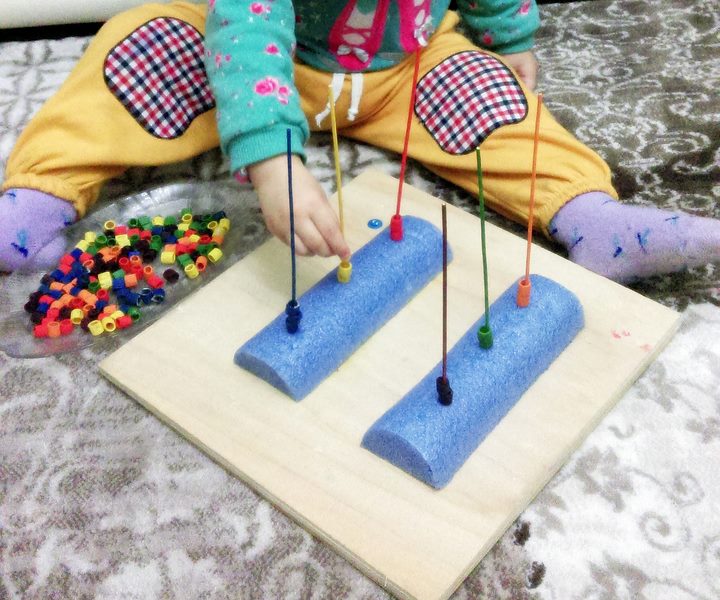
Revision of colors with colored macaroni and sticks.
The skill group that requires children to use their hands and fingers is called fine motor skills. The better their hand-eye coordination is developed, the better the children use their hands.
Considering everyday skills, we use this skill group to fulfill the steps that are necessary for our lives. The children who cannot use their hands and fingers well are not only having difficulty in fulfilling their everyday life skills, but their school life and writing skills is effected negatively as well. Lack of self-confidence caused by academical success also effects the social life of them negatively.
Montessori At Home
Attention is a skill that can be improved beginning from the birth. The ability of children to follow the warnings, their focus power and duration and their perception of relationship between objects are quite important processes. No matter how smart a child is, attention is a very significant contribution for success. You too can support the development of your child’s attention, focus and fine motor skills with these kind of activities at home.
However, there is a point to be considered. Not every child has the same attention and focus duration. For that reason, please do not compare our children with each other. All we have to do is to follow cautiously their process of concentration which gradually develops with their age, and to contribute their development by considering their learning methods.
8- Bunny-Tail Matching
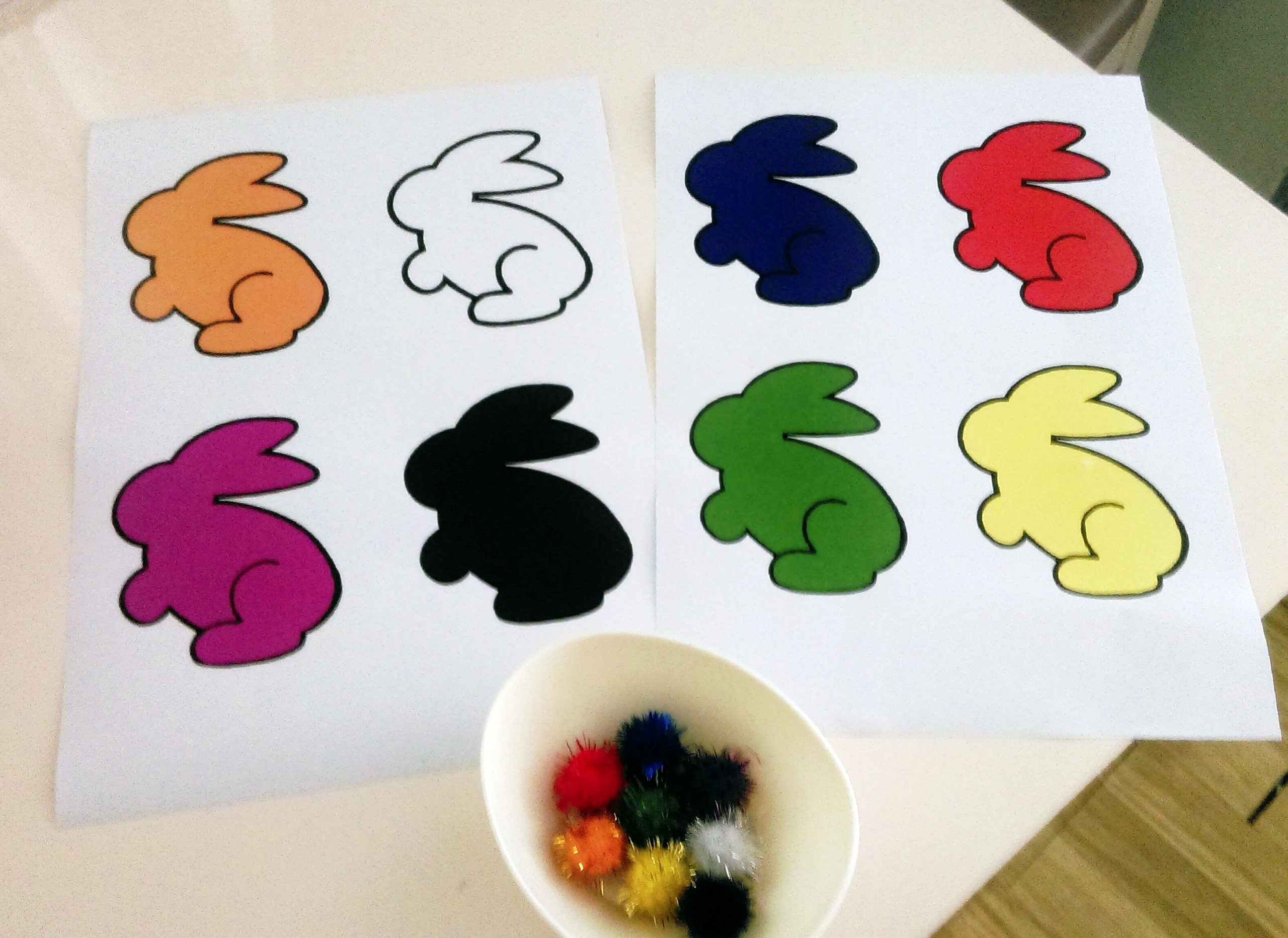
Placing the pompoms on the bunnies’ tails of the appropriate color is a fun activity for the revision of colors. Have fun!
9- Learning Beak Types
There is a bird-themed activity on this page which I prepared for my daughter. We^re going to talk about how the birds feed, what they eat and what happens in their life by considering bird species and beak types one by one. While taking these topics into consideration, we will carry out some activities reflecting their feed. Our first species is duck.
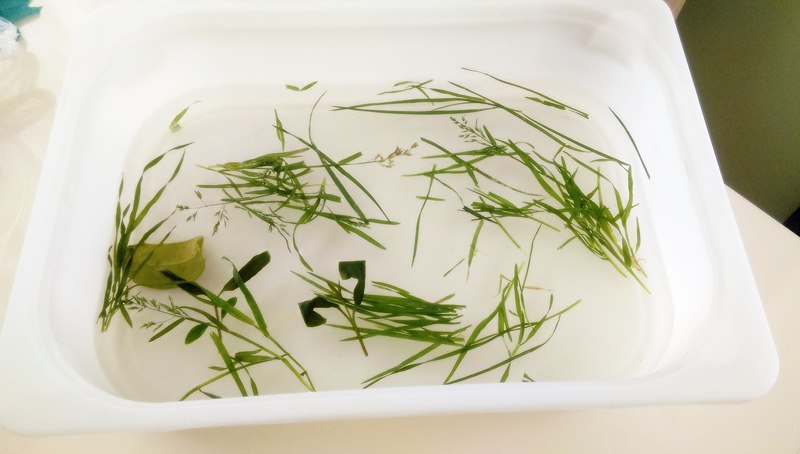
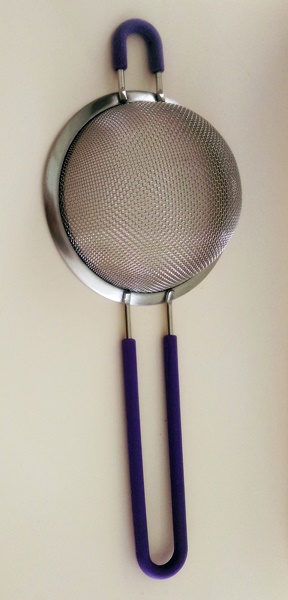

Taking the grass in the water out with a sieve. After this activity, we went out and observed some ducks. Then we talked about what they were doing. Have fun!
10- Pounding Nails Activity
Montessori Activities of Everyday Skills
This section includes pounding nails activity I prepared for my daughter in the theme of construction.

Materials:
- A piece of wood
- Silicone
- Toy Hammer
- Styrofoam
- Sparkler
- The thing used for placing sparklers on cake (as nails)
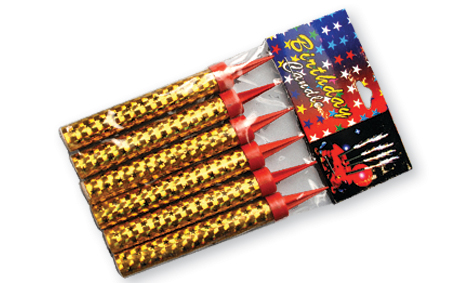
We first put on and off the nails with hands, then pound them with hammer. My daughter loved it so much that she did it over and over again. It’s a fun activity for hand-eye coordination.
Hand-eye coordination can be described as the skill of coordinating hand-eye movements and using them simultaneously. While hands are working together for fine motor skills, as in writing, it is important that eyes too are guiding for the movements of hands and fingers. Thus, a significant improvement in fine motor skills is seen between the ages of 3-5.
Activity Examples for the Development of Hand-Eye Coordination
Playing with cubes and legos: You can play building a tower game by putting the cubes on top of each other and you can make various shapes by putting on and taking off the legos. As the child growns up and their ability improves, you can move on to smaller pieces.
Playing with play dough: You can make shapes with play dough and clay by rolling them, and pulling them off with fingers.
Finger puppets: Playing with finger puppets will both improve the ability of using fingers and will contribute to language development. It can also be played by painting the fingers.
Doing a jigsaw: Jigsaws that are appropriate for their age, will be beneficial for fine motor skills and hand-eye coordination.
Painting with finger paints: You can make an activity of painting the shapes you drew and making geometrical shapes by using finger paints.
Painting activities: Painting with crayons, pencils and watercolors will improve their pencil holding skill. Starting from large spaces , you should gradually move on to smaller and limited ones.
Cutting and glueing activities: You can make collages by cutting the pictures they like from magazines and news, and glueing them. You can play a game of cutting paper and play dough with scissors.
Stringing beads: You can make a necklace by stringing some beads and macaroni of different sizes. You can also use buttons instead of beads. Starting from the obejcts with big holes, you should move on to smaller ones as it progresses.
Picking up small objects by using thumb and index finger: Put some small objects on to the tray and play a picking up and dropping (into a jar) game by making them use their index finger and thumb. (If you have difficulty in finding small objects, you can use tiny legumes as lentils, beans and peas. If there is a toy wood for nails, you can use nails of this or some small beads.) You can play a similar game by taking these small objects out of the jar and put them on the tray with thumb and index finger.
You can play a picking up the objects game with tongs. You can give them the opportunity to turning such experiences into games as making holes on the paper by puncher, opening textile tissues, sharpening a pencil with sharpener, wrinkling a paper, cutting a paper, folding clothes and towels, zipping and unzipping, buttoning and unbuttoning and so on.
Wind-up Toys: You can encourage them to wind up toys or a music box.
Mikado: You can play a game of picking up woodsticks you threw around, without making them touch one another. You can do this also with matchsticks too.
Opening and closing the jar: You can ask them to open the jars at home which are not so tightly closed. Lids must not be larger than the size they can grasp.
Playing with toy nail wood: You can play a game of putting on and off the plastic nails of different sizes. Starting with large pieces, continue with smaller ones.
You can ask them to make different shapes on different surfaces with fingers. For example, you can ask them to draw shapes on sand or on wall.
It can be asked to paint on a large piece of paper you sticked to the wall. This kind of activities strengthen wrists and shoulders.
The child can be asked to draw on a surface you foamed shaving foam.
You can support your child’s hand-eye coordination development by this kind of activities you can prepare at home.
11- Pestling Egg Shell
In this section, there is a activity in the theme of bird, which I prepared for my daughter.
In Montessori system, exercises aimed in the name of everyday skills consist of all experiences the child could encounter with in daily life. That is to say, it does not belong only to the child’s own self care but it involves all their relationship with living and non-living creatures in their close environment. Materials are prepared from the things appropriate for the characteristics of cultural environment in which the child lives.
Daily life skill exercises in Montessori Education contribute to child’s success in their own occupations and provide them with independence.The child loves doing household and finds the opportunity to improve their all muscles and organs that need to be used while doing it. For example; picking out legumes, doing the dusting, spooning, openning a bottle, pinning the clothes etc. These kinds of households are filled with countless opportunities to support the mental development of child and to imrpove their muscles. In all this steps, wrists and fingers constantly function. Hand wrist movement belongs only to human. Hnads are organs of intelligence. It has been proven that intelligence develops with the use of hands.
Maria Montessori says “The hand is the instrument of intelligence. The child needs to manipulate objects and to gain experience by touching and handling”. With these exercises, they learn to control and coordinate their movements, to be patient and to work with focusing. They are prepared for literacy, mathematics, sensor and universal thinking. They learn to improve their own boundaries and proficiency and thus; they realize their own power and creativity. They comprehend the logical order in different steps of an exercise.
Maria Montessori suggest that the child develops a gentle behavior and gets inner peace as a result of meditation feature of daily life exercises. A fully-developed child develops a personality who loves to , carries the sense of responsibility, deals with problems and who has a peace of mind with themselves and their environment.
For activity examples of daily life skills, you can visit our facebook page and benefit from our website.
We prepared a pestling egg shell activity as a daily life skill in the theme of birds. My daughter played around for a while and little fingers and hands were activated. You can support your child’s development with this kind of activities you can prepare at home. Have fun!
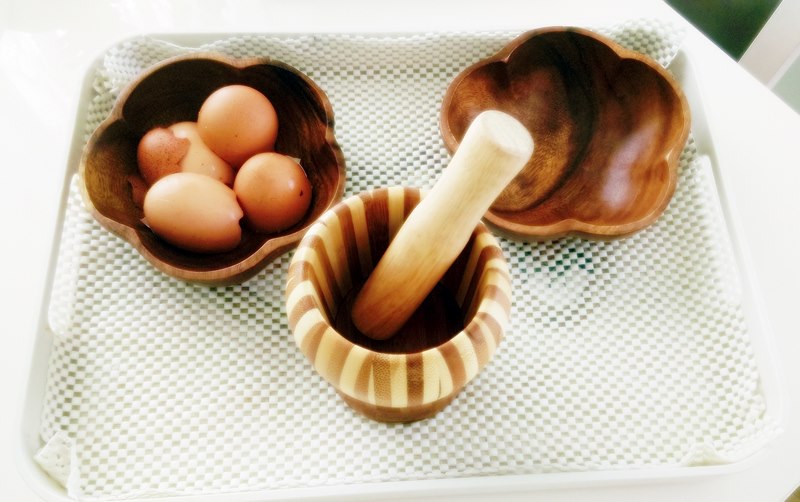
12- Sweeping Black Stones
This section includes sweeping black stones activity I prepared for my daughter in the theme of construction.

Materials:
- A tiny hand brush
- Dustpan
- Things to throw around (black stones)
- Tape (preferably a yellow one)
First of all, black stones are spread on a large tray and the middle is taped to specify the center. Then materials are swept to this center point and are transferred from there to dustpan. After this, materials used are placed on the tray are removed. Using an apron during this activity is important.
This activity contributes the development of hand-eye coordination besides daily life skills. The more their hand-eye coordination improves, the better the children use their hands. The children who cannot use their hands and fingers well are not only having difficulty in fulfilling their everyday life skills, but their school life and writing skills is effected negatively as well. Lack of self-confidence caused by academical success also effects the social life of them negatively.
Daily life skills in Montessori system are filled with such activities that are interesting for children and are going to form a basis of physical and mental activities of later years. Briefly, daily life skills contribute to their development by providing a safe environment for them to apply activities that they could encounter with in everyday life. Practice of using spoon, knife and fork, which they made by themselves with materials appropriate for their age, enables children to hold a pencil properly; transferring legumes or water from one cup to another supports their attention.
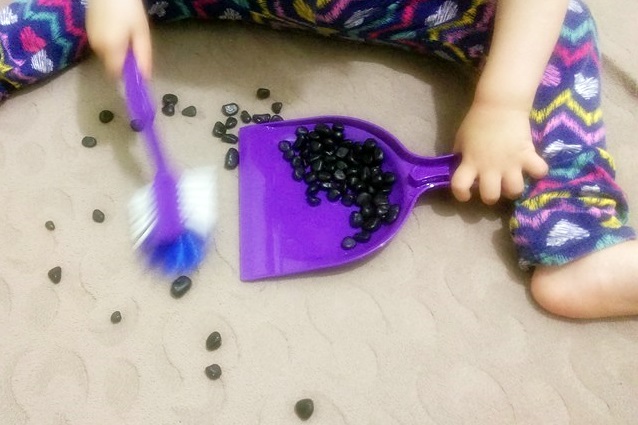
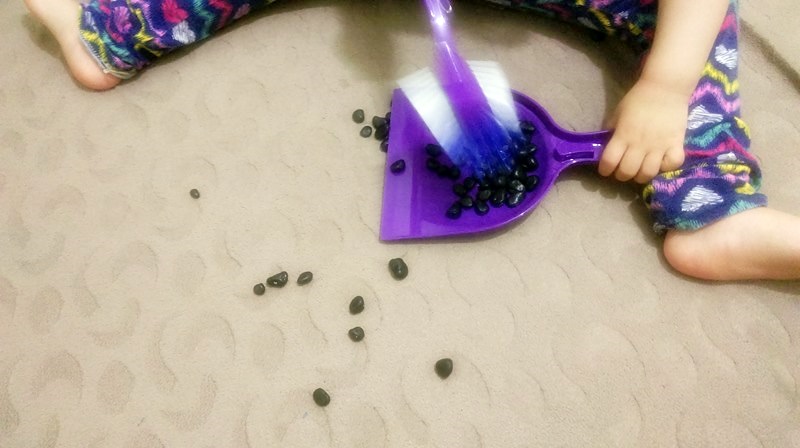
In these pictures, Ceren wanted to continue the activity without tape and I didn’t object. Please don’t intervene the activities unless there is a dangerous situation for the children. Have fun!
13- Transfer with Handy Scoopers
Montessori Transfer Activities
In this section, there is a transferring black stones activity with handy scoopers I prepared with my daughter.
Transferring activities are included in daily life skills. It’s very beneficial for hand-eye coordination and fine motor skills. Besides, it contributes to concentration duration of child and helps them focus. In transfer activities, an order is followed from easy to hard and from simple to complex. While transferring with hands and coarse-grained objects is done first, it is gradually moved to transferring with smaller ones. Objects such as tweezers and tongs are used as a replacement of hands. Solid objects are transferred first, then it is moved to liquids. It’s a very important activity for the preparation to literacy.
Activities are shown as quietly as possible. Instead of showing how to do, you should make them observe silently without speaking. Have fun!
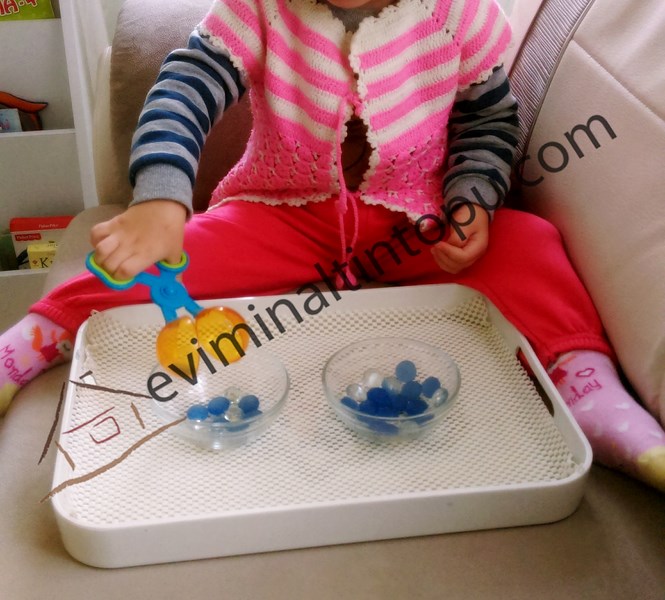
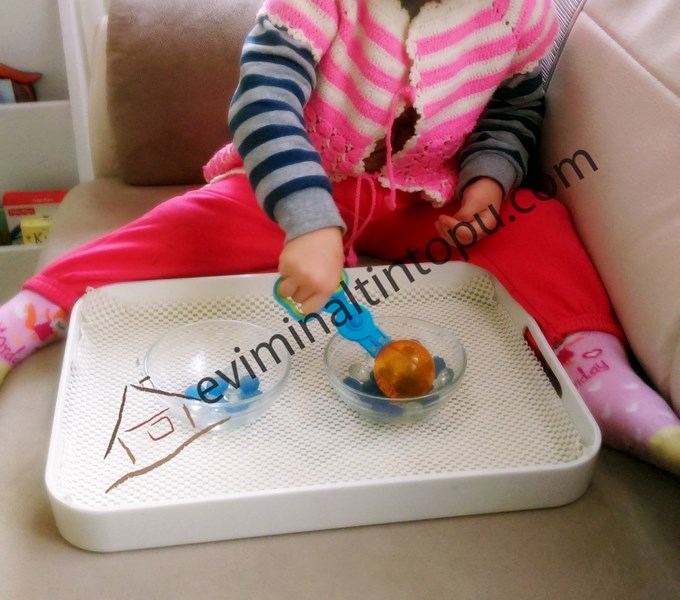
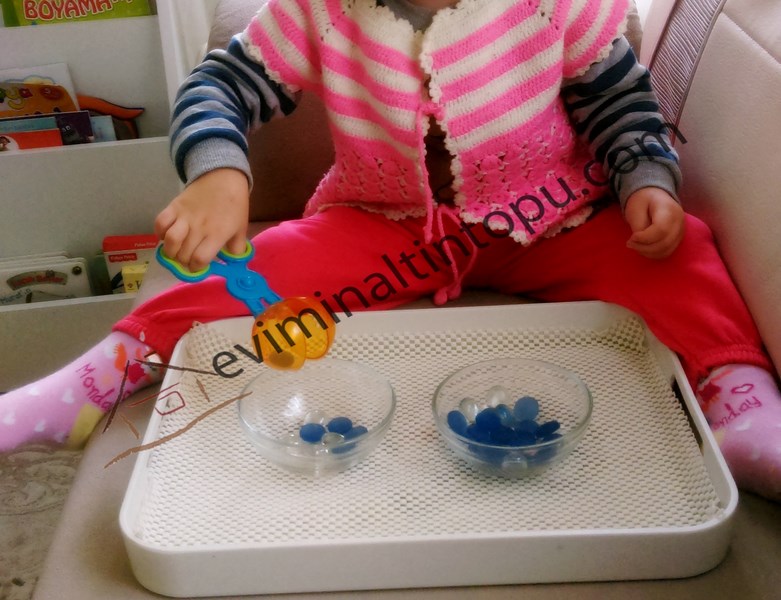
14- Cotton Transferring
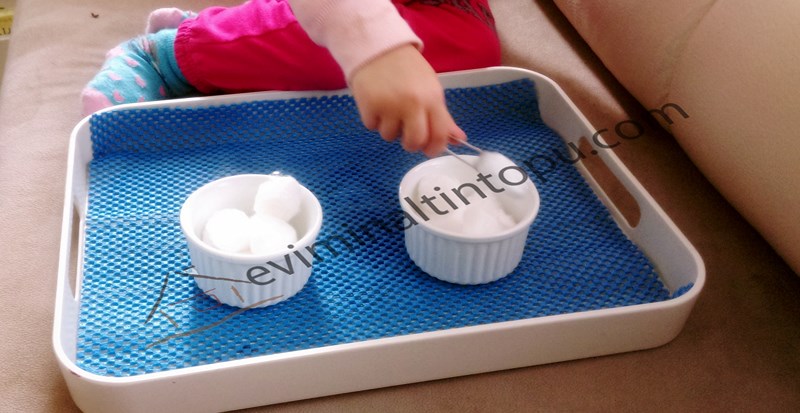

15- Footprint Observation and Matching Them Up
As interest in footprints have continued, our activities have become related to this theme. We observed footprints of animals and played a matching-up game with book. Have fun!

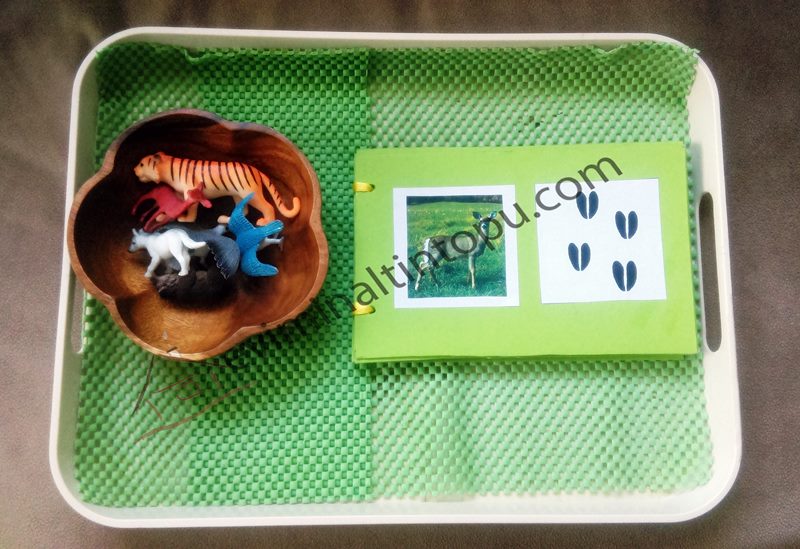
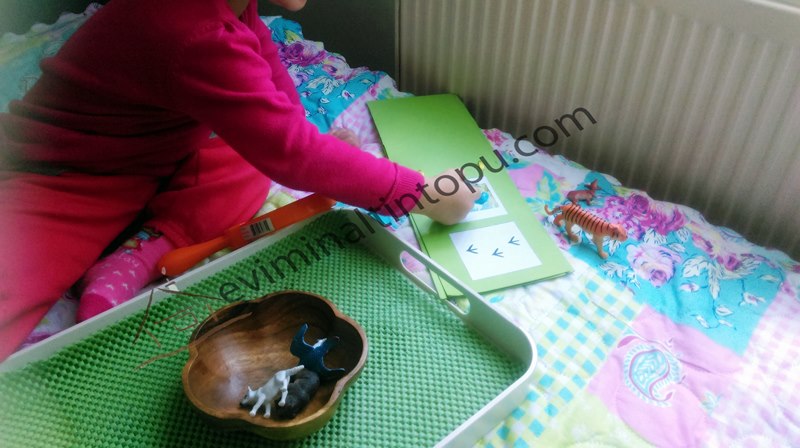
16- Rice and Flour Sifting
Daily Life Skills
This section includes another activity I prepared with my daughter while continuing the autumn theme.
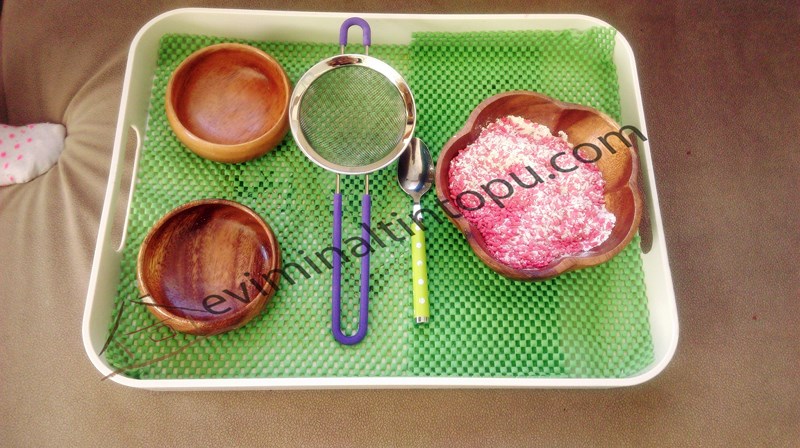
Materials; mixture of colored rice and flour, spoon, sieve and tiny bowls

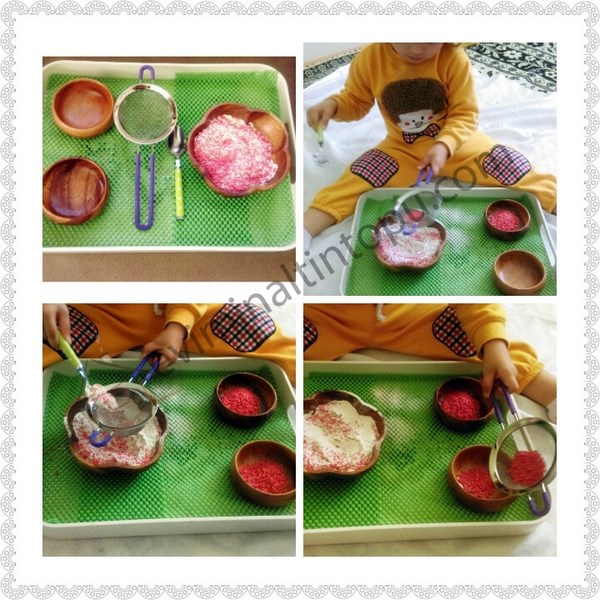
Maria Montessori suggest that the child develops a gentle behavior and gets inner peace as a result of meditation feature of daily life exercises. A fully-developed child develops a personality who loves to , carries the sense of responsibility, deals with problems and who has a peace of mind with themselves and their environment.
17- Breathing Exercises with Pipette
Breathing methods applied to kids are the ones that are developed according to the brain and body development of the child. Since the most effective way for children to learn something is through games, breathing exercises are carried out through games too. Positive results are obtained from group exercises as well as individual exercises. Thanks to these exercises, the section of brain responsible for breathing can be trained and thus, enough oxygen can be delivered to the tissues. In this case, brain with adequate oxygen and sugar functions with full capacity. Brain comes to the best point for ease of learnin, motivation, concentration and evoking the hidden potentials. A lot of benefits are provided such as control of involuntary movements and tics, awareness of unity, development of imagination, dealing with physical and familial problems and using empathy. (Personal Development Specialist and Breathing Coach Gül Kızıltepe)
You can contribute to your child’s development in this field by enjoying this kind of breathing games.
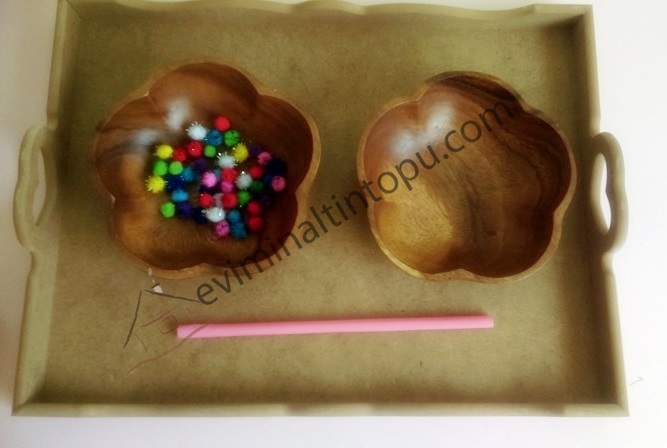
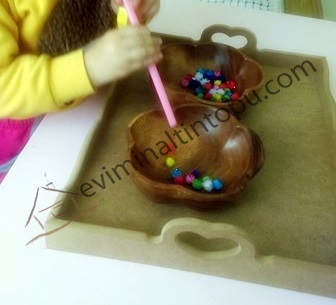
We first transferred tiny pompoms with pipettes.

As Ceren loved transferring pompoms, we made a color-matching activity as a follow-up with bigger pompoms.
18- Tying Fine Motor Activity
We have made some activities to improve fine motor skills. There is one of them below with materials.
Tying activity in the theme of seahorse.
Materials:
- Scissors
- Googly eyes
- Railroad board
- Pencil
- Puncher
- Rope and a woodstick at the end of it
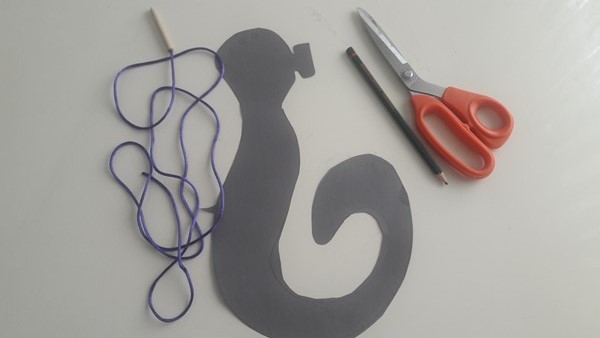
Cut out a seahorse from railroad board and make some holes on the neck with puncher.

Our rope pieces and seahorse are ready.
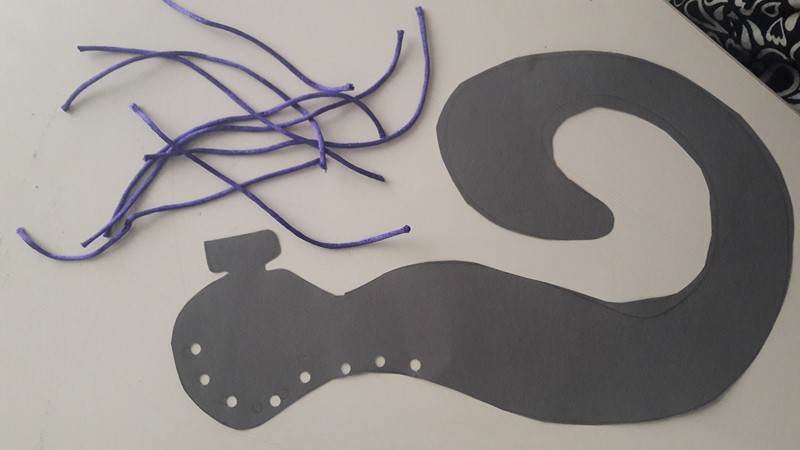
Glue the googly eye and exercise is ready.
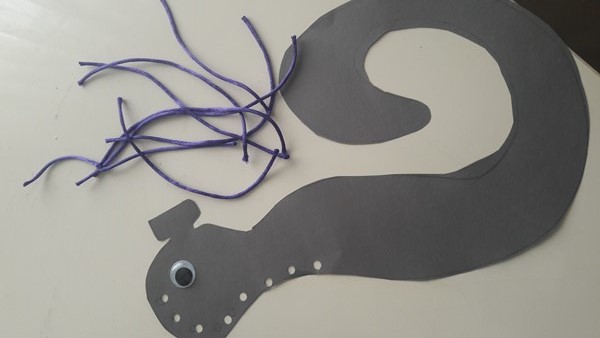
Tying steps and my daughter doing them are in the pictures.
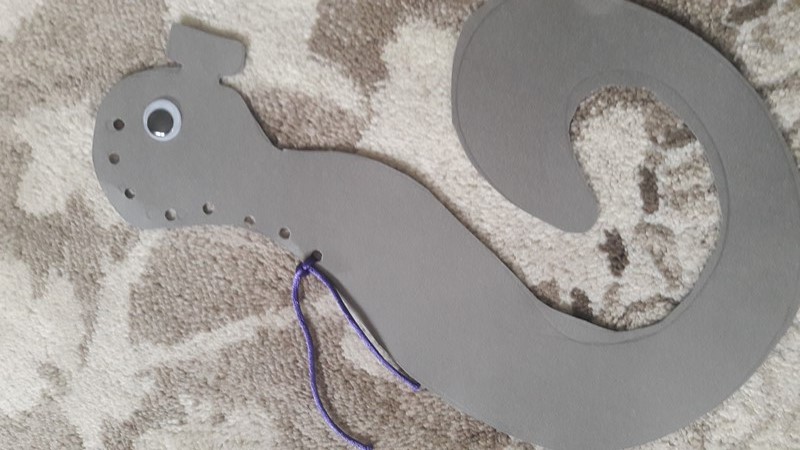

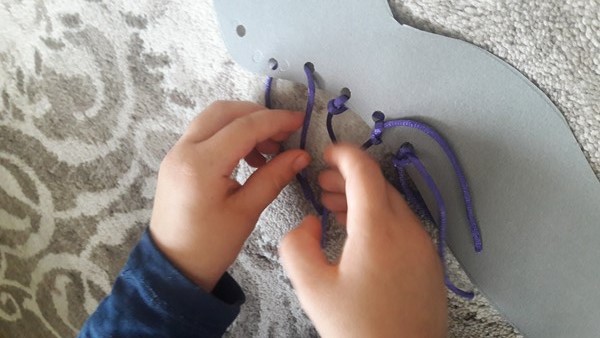
And the final work. Have fun!

For more detailed information www.eviminaltintopu.com
 Homeschool Craft and Art Craft Activities
Homeschool Craft and Art Craft Activities
